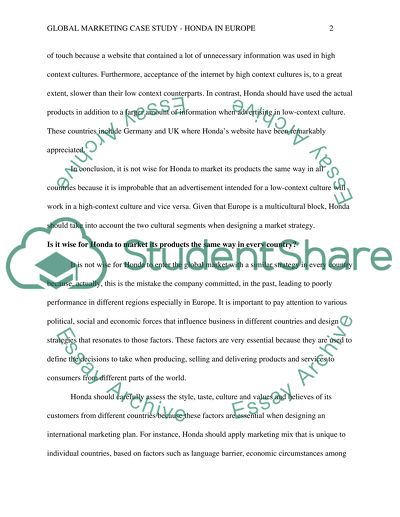Cite this document
(“Honda in Europe Case Study Example | Topics and Well Written Essays - 2250 words”, n.d.)
Honda in Europe Case Study Example | Topics and Well Written Essays - 2250 words. Retrieved from https://studentshare.org/marketing/1402742-global-marketing-case-study-honda-in-europe
Honda in Europe Case Study Example | Topics and Well Written Essays - 2250 words. Retrieved from https://studentshare.org/marketing/1402742-global-marketing-case-study-honda-in-europe
(Honda in Europe Case Study Example | Topics and Well Written Essays - 2250 Words)
Honda in Europe Case Study Example | Topics and Well Written Essays - 2250 Words. https://studentshare.org/marketing/1402742-global-marketing-case-study-honda-in-europe.
Honda in Europe Case Study Example | Topics and Well Written Essays - 2250 Words. https://studentshare.org/marketing/1402742-global-marketing-case-study-honda-in-europe.
“Honda in Europe Case Study Example | Topics and Well Written Essays - 2250 Words”, n.d. https://studentshare.org/marketing/1402742-global-marketing-case-study-honda-in-europe.


